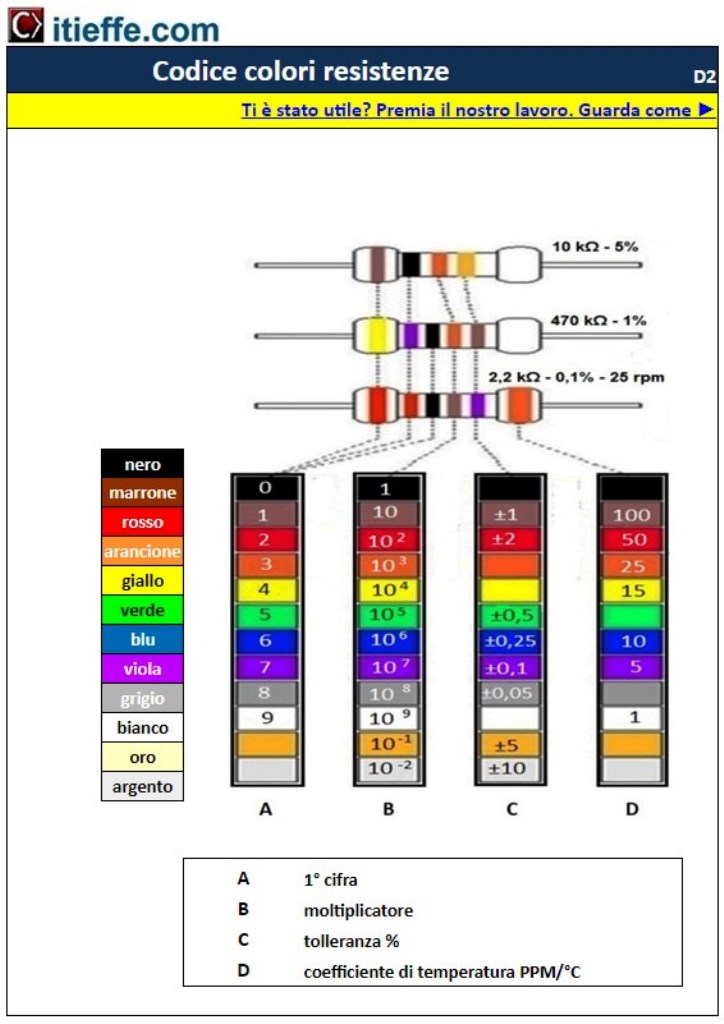Resistance color code

Color coding of electrical resistors
The Resistor Color Code is a fundamental document for anyone who deals with electronics, electricity or engineering and needs to read and understand the value of electrical resistors. Color coding is a standardized and universally recognized system used to indicate the ohmic value of resistors, greatly simplifying component identification and selection.
With this guide, we will explore in detail how color coding is used to determine the value of electrical resistors. It is a visual method that allows you to quickly and accurately obtain essential information about the characteristics of a resistor, such as its resistance and tolerance.
As we read through this guide, we will discover how the colors of the stripes on a resistor are organized and how to interpret them to get the exact value. Additionally, the differences between 4, 5 and 6 band resistors and how these affect the value reading will be explained.
Understanding the color coding for resistors is a critical skill for anyone working with electronic or electrical circuits, as it helps select the right resistors for a given application. This guide provides a comprehensive overview of this important aspect of electronics and will be a valuable tool for those who wish to master the art of reading and interpreting the value of electrical resistors.
Resistance color code
(to perform the calculations directly for each band, follow the following link: Calculation of color coded electric resistances).
How the value of the electrical resistances is read through the color code.
The color code shown in this section is used to correctly identify the value of an electrical resistance.
Using the color coding of the resistors (which uses different colors), anyone can determine exactly the Ohm measurement of the resistance under consideration.
Other information deductible from the color code are:
- the tolerance as a percentage (%)
- the temperature coefficient in parts per million per degree centigrade (PMM / ° C), for six-band resistors only.
As an example, the values shown in the drawing can be used directly.
For those who want to use an online calculator directly to quickly find the resistance value, they can use the following programs divided into the three types of bands that identify all the resistance parameters.
Online calculation of the individual electrical resistances:
Other free programs of the same kind offered by itieffe ▼
- Electricity - Electronics
- Calculation of color coded electric resistances
- Electric - electronic tables
- Electrical drawing diagrams
Resistance color code
The program below is free to use.
To access the reserved version (see below), full page and without advertising, you must be registered.
You can register now by clicking HERE
